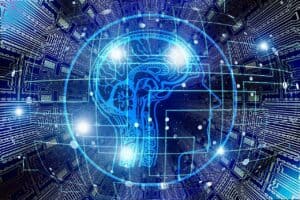
The advent of artificial intelligence (AI) has brought significant advancements across various industries. Among the most transformative tools for creatives today is the AI-powered editor. By combining powerful computational capabilities with user-friendly design, these tools are revolutionising how creators approach visual projects. Whether for photographers, graphic designers, or digital marketers, AI-powered editing is streamlining workflows and pushing creative boundaries.
The Rise of AI in Creative Workflows
In recent years, an AI image editor has become a central component of creative software. Its ability to learn and adapt has shifted the way artists and professionals work. Tasks that once took hours—such as refining complex selections or adjusting lighting intricacies—can now be done in seconds. This evolution allows creatives to focus more on the vision and artistry behind their projects rather than getting bogged down in time-consuming details.
AI in image editing tools operates by analysing data patterns and applying intelligent modifications. For example, it can distinguish between different objects in an image, recognise fine textures, and even mimic natural lighting adjustments. These capabilities give creators precision, speed, and consistency in their work, resulting in higher-quality outputs.
Streamlined Editing for Professionals and Hobbyists
One of the standout benefits of an AI-powered editor is its accessibility. These tools are not limited to professional artists. Hobbyists and beginners can achieve high-quality results without prior expertise in design or editing. The intuitive nature of AI-powered platforms means users can edit images quickly, experiment with effects, and transform their photos with minimal effort.
For professionals, AI tools save valuable time. Tasks like retouching portraits, removing unwanted objects, or colour grading entire batches of images can be completed efficiently. This enables photographers, designers, and marketers to meet tight deadlines while maintaining exceptional quality. Hobbyists, on the other hand, can explore creative possibilities without the steep learning curve of traditional software.
Enhancing Productivity through Automation
Automation is a defining feature of AI-powered tools. These systems are designed to simplify repetitive tasks, allowing users to achieve more in less time. For instance, batch editing capabilities can apply consistent adjustments across hundreds of images at once. Whether it’s resizing, cropping, or applying filters, the AI does the heavy lifting.
Additionally, advanced algorithms can perform actions that traditionally require manual input. Removing backgrounds, enhancing sharpness, and even restoring old photographs are now straightforward processes. This automation not only enhances productivity but also ensures that creatives can allocate their energy to more strategic aspects of their projects.
Precision and Creativity in Perfect Harmony
One of the challenges of traditional editing tools is achieving precision without sacrificing creative flexibility. AI-powered editors excel at addressing this balance. By leveraging machine learning, these tools can make pixel-perfect adjustments while preserving the creative intent of the user.
For example, content-aware tools can identify and seamlessly fill gaps in an image, making retouching almost effortless. Similarly, AI-powered filters and effects offer tailored adjustments that align with the user’s aesthetic goals. These enhancements empower creatives to experiment and innovate without worrying about the technical complexities.
Furthermore, AI-powered editors often include predictive capabilities. By analysing user behaviour and preferences, the software can suggest adjustments or templates that align with the project’s theme. This intuitive approach encourages creative exploration, even for those who may not consider themselves naturally artistic.
Revolutionizing Collaboration in Creative Industries
AI-powered tools are also transforming collaboration. In industries where teamwork is essential, such as advertising or content creation, these tools make it easier to share and refine work. Cloud-based AI platforms allow multiple users to access and edit the same project simultaneously, ensuring seamless collaboration regardless of location.
Moreover, AI tools can help maintain brand consistency across projects. For instance, pre-set templates and automated adjustments ensure that all content adheres to specific branding guidelines. This is particularly valuable for agencies managing campaigns across multiple channels.
The ability to collaborate efficiently also extends to receiving feedback. AI tools can quickly generate previews or mockups, enabling clients or team members to review work and provide input. This streamlined feedback loop reduces revision cycles and accelerates project completion.
Empowering Digital Content Creation
As digital content demand grows, AI-powered editors play a vital role in content creation. Social media, websites, and marketing campaigns depend on high-quality visuals to grab attention. AI tools simplify crafting impactful imagery tailored to various formats and platforms.
Content creators benefit from features like automatic resizing and channel-specific optimisation. A single image can be quickly adapted for Instagram, Facebook, or email marketing, ensuring visual appeal across touchpoints. The ability to produce polished visuals fast is crucial in today’s digital sphere. Whether designing a promotional graphic or enhancing product photos, AI tools help creators meet audience expectations and stay competitive.
An AI image editor is transforming the creative terrain with powerful, user-friendly tools. By automating tasks and enhancing precision, they open new possibilities for professionals and beginners. These tools streamline workflows, foster collaboration, and elevate content quality, making them essential in the modern visual world. As technology proceeds, AI editing tools will evolve, shaping an exciting future for creatives. From digital art to social media graphics, AI is redefining what’s possible in visual storytelling.



